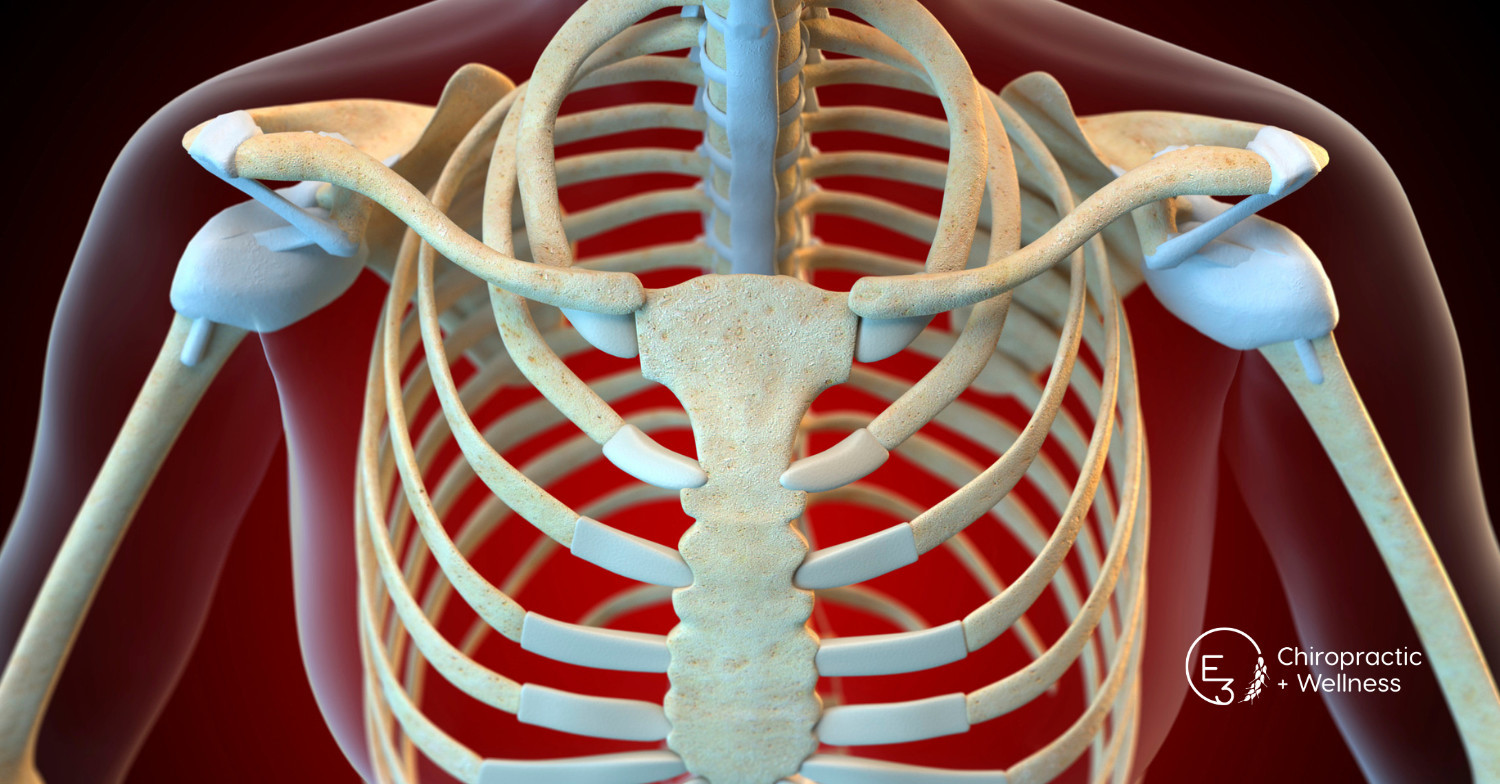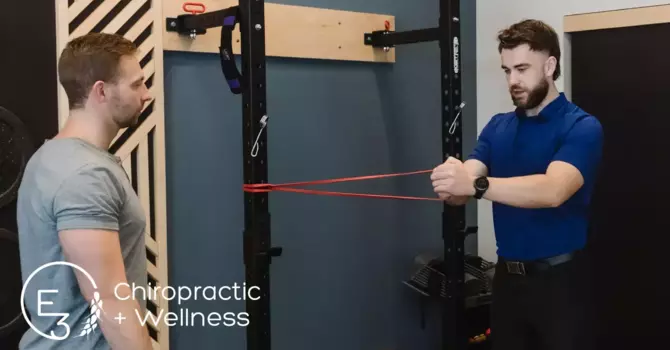
Have you ever experienced numbness or tingling in your arms, shoulder pain that radiates into your hand, or a sense of weakness that seems to come out of nowhere? These symptoms are surprisingly common, and they often leave people feeling frustrated and confused about where the problem is actually coming from. For many individuals, these symptoms could be the result of a condition known as Thoracic Outlet Syndrome (TOS). At E3 Chiropractic + Wellness, we frequently encounter patients dealing with this condition, and with the right approach, relief is possible.
If you’ve been struggling with unexplained pain, discomfort, or weakness in your upper body, you’re not alone. Let’s dive deeper into what Thoracic Outlet Syndrome is, what causes it, and how chiropractic care can help alleviate these issues—starting with understanding how your everyday activities might be contributing to the problem.
What is Thoracic Outlet Syndrome?
Thoracic Outlet Syndrome is a condition that occurs when the nerves or blood vessels in the thoracic outlet—the space between your collarbone (clavicle) and your first rib—are compressed. This can lead to a variety of symptoms in the neck, shoulders, arms, and hands. The thoracic outlet is a crucial passageway for nerves and blood vessels that serve the upper limbs, so any compression in this area can result in significant discomfort or dysfunction.
There are three primary types of TOS:
- Neurogenic Thoracic Outlet Syndrome – The most common type, this involves the compression of the brachial plexus, a group of nerves that control muscle movements and sensations in the shoulder, arm, and hand.
- Venous Thoracic Outlet Syndrome – This occurs when a vein is compressed, leading to swelling, pain, and possibly blood clots.
- Arterial Thoracic Outlet Syndrome – The least common, this involves compression of an artery, causing more severe symptoms like coldness or pallor in the arm, and potentially serious complications.
What Causes Thoracic Outlet Syndrome?
The causes of TOS can vary, and in many cases, it develops gradually over time. Certain factors, however, can increase your risk of developing this condition:
- Poor posture: Slouching or hunching over for extended periods (think long hours at a desk or while driving) can compress the thoracic outlet. This is particularly common in individuals who spend most of their day seated.
- Repetitive movements: Jobs or activities that involve repetitive overhead arm movements, such as painting, swimming, or lifting, can lead to thoracic outlet compression.
- Trauma: A sudden injury, such as a car accident or a fall, can damage the muscles or tissues surrounding the thoracic outlet, leading to compression.
- Anatomical anomalies: Some people may have an extra rib (called a cervical rib) or other unusual structures that make the space in the thoracic outlet smaller, increasing the risk of compression.
- Carrying heavy bags: Those who frequently carry heavy bags on one shoulder can also place undue stress on the nerves and blood vessels in this area.
If these symptoms sound familiar to you, it’s essential to seek proper care to address the root cause of the issue. Fortunately, the right chiropractic treatment plan, such as the one offered by E3 Chiropractic + Wellness, can be highly effective in managing and relieving TOS symptoms.
Symptoms of Thoracic Outlet Syndrome
The symptoms of TOS can vary depending on whether nerves, veins, or arteries are being compressed. However, some common symptoms include:
- Pain or aching: Most commonly felt in the neck, shoulder, or arm. This pain may radiate down the arm and into the hand.
- Numbness or tingling: Often felt in the arm, hand, or fingers, especially the pinky and ring fingers.
- Weakness: Many individuals with TOS experience weakness or difficulty gripping objects.
- Swelling: In cases of venous TOS, the affected arm or hand may swell.
- Coldness or discoloration: In arterial TOS, the hand or fingers may feel cold or appear pale due to reduced blood flow.
While these symptoms may come and go, ignoring them can lead to long-term complications. Getting to the root of the issue is crucial, and chiropractic care can provide a non-invasive, effective solution.
How Chiropractic Care Can Help with Thoracic Outlet Syndrome
Chiropractic care focuses on addressing the underlying mechanical issues that cause Thoracic Outlet Syndrome. At E3 Chiropractic + Wellness, we take a comprehensive approach to treating TOS by correcting postural imbalances, releasing muscle tension, and improving joint function. Here’s how chiropractic care can help:
1. Postural Correction
As mentioned earlier, poor posture is a significant contributor to TOS. Chiropractors at E3 Chiropractic + Wellness can assess your posture and identify areas where you may be putting unnecessary strain on your thoracic outlet. Through chiropractic adjustments, stretching exercises, and ergonomic advice, we can help you adopt healthier postural habits that alleviate compression on nerves and blood vessels.
2. Manual Therapy
Chiropractors use a variety of hands-on techniques to reduce muscle tension and improve mobility in the affected areas. By releasing tight muscles in the neck, shoulders, and upper back, we can create more space in the thoracic outlet and reduce the pressure on compressed nerves or blood vessels.
3. Chiropractic Adjustments
Chiropractic adjustments aim to restore proper motion to the spine and surrounding joints. In cases of TOS, joints throughout the cervical spine (neck area) and thoracic spine (upper back) are often not moving well, contributing to nerve compression. Restoring motion to these areas can relieve pressure on the brachial plexus and promote better nerve function.
4. Rehabilitation Exercises
Our chiropractors will also provide you with a personalized exercise plan to strengthen and stretch the muscles around the thoracic outlet. By improving your strength and flexibility, these exercises help prevent future episodes of TOS and promote long-term wellness.
5. Lifestyle Modifications
At E3 Chiropractic + Wellness, we take a holistic approach to care, which includes guiding you on lifestyle changes that can prevent TOS flare-ups. This might involve modifying your workstation setup, avoiding repetitive overhead activities, or using better techniques for carrying heavy loads.
Why Choose E3 Chiropractic + Wellness?
At E3 Chiropractic + Wellness, our goal is not just to relieve your symptoms but to address the root cause of your condition and help you achieve long-lasting relief. With our expertise in chiropractic care, we can provide individualized treatment plans that suit your specific needs, whether you’re dealing with TOS or any other musculoskeletal condition. Our approach is thorough, compassionate, and designed to empower you with the knowledge and tools to take control of your health.
If you’re in the Saskatoon area and are experiencing symptoms of Thoracic Outlet Syndrome, don’t wait for the discomfort to become unbearable.
Click HERE to schedule a FREE discovery call today and take the first step toward a pain-free, healthier life.
We’re here to help you feel your best, every day.





